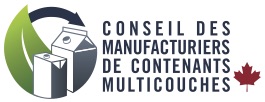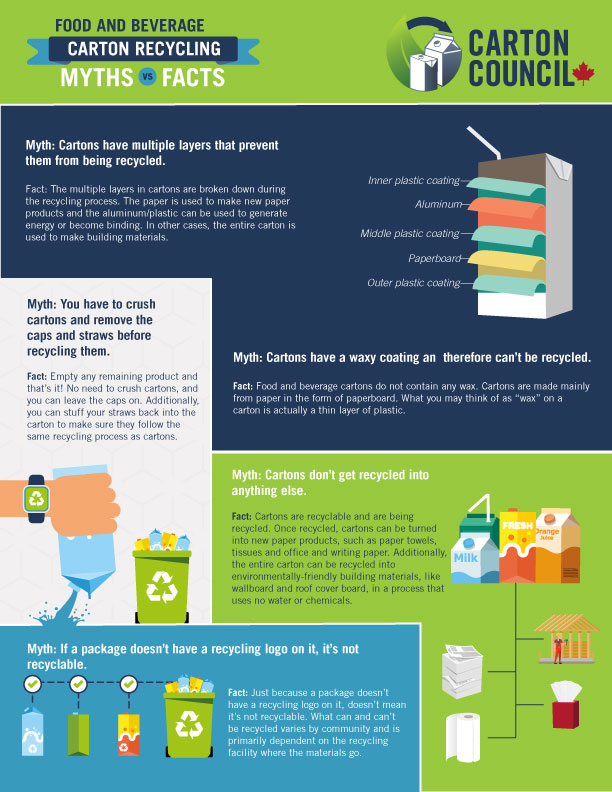Carton Recycling Myths vs Fact
We heard you loudly and clearly! You’re recycling your food and beverage cartons but your friends and neighbors are not. We’re here to help! Use the cheat sheet to the right to bust myths and convert them into recycling heroes.
Myth: Cartons have a waxy coating and therefore can’t be recycled.
Fact: Food and beverage cartons do not contain any wax. Cartons are made mainly from paper in the form of paperboard. What you may think of as “wax” on a carton is actually a thin layer of plastic.
Myth: Cartons have multiple layers that prevent them from being recycled.
Fact: The multiple layers in cartons are broken down during the recycling process. The paper is used to make new paper products and the aluminum/plastic can be used to generate energy or become binding. In other cases, the entire carton is used to make building materials.
Myth: You have to crush cartons and remove the caps and straws before recycling them.
Fact: Empty any remaining product and that’s it! No need to crush cartons, and you can leave the caps on. Additionally, you can stuff your straws back into the carton to make sure they follow the same recycling process as cartons.
Myth: Cartons don’t get recycled into anything else.
Fact: Cartons are recyclable and are being recycled. Once recycled, cartons can be turned into new paper products, such as paper towels, tissues and office and writing paper. Additionally, the entire carton can be recycled into environmentally-friendly building materials, like wallboard and roof cover board, in a process that uses no water or chemicals.
Myth: If a package doesn’t have a recycling logo on it, it’s not recyclable.
Fact: Just because a package doesn’t have a recycling logo on it, doesn’t mean it’s not recyclable. What can and can’t be recycled varies by community and is primarily dependent on the recycling facility where the materials go.


